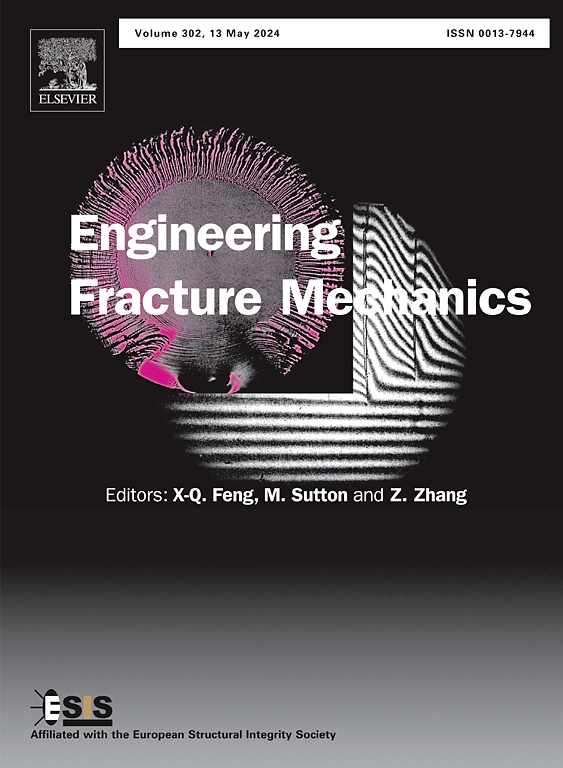Accurate fractographic strength estimates in single-crystal silicon via neural network approach
IF 4.7
2区 工程技术
Q1 MECHANICS
引用次数: 0
Abstract
Unstable cracks in single-crystal silicon generate smooth fracture surfaces at low crack velocity while forming rough surface features when deflecting onto more energy-favorable cleavage planes at higher propagating speeds. In this study, the surface features induced by cracks propagating on the (110) plane due to a flexural stress field were studied. An iteration approach was used to predict the locations where the crack tip branched onto the {111} plane. The numerical scheme successfully predicted the deflection boundaries for specimens within a broad range of strengths. Characteristic fractographic dimensions discernable on the fracture surfaces produced by 3-point bending were first defined and then utilized to train a neural network model. The proposed model significantly improved the strength estimations in single-crystal silicon compared to traditional fractographic methods. Notably, unlike traditional fractography, the neural networks model displayed comparable strength prediction accuracy when analyzing asymmetric fractographic fracture surfaces formed in the presence of secondary surface damage or lateral cracks.
基于神经网络的单晶硅断裂强度的精确估计
单晶硅的不稳定裂纹在低裂纹速度下产生光滑的断口,而在较高的传播速度下向更有利于能量的解理面偏转时形成粗糙的表面特征。本文研究了弯曲应力场作用下裂纹在(110)平面上传播所引起的表面特征。采用迭代法预测裂纹尖端在{111}平面上分支的位置。该数值格式成功地预测了试件在较宽强度范围内的挠度边界。首先定义三点弯曲产生的断口表面可识别的特征断口尺寸,然后利用其训练神经网络模型。与传统的断口学方法相比,该模型显著改善了单晶硅的强度估计。值得注意的是,与传统断口学不同,神经网络模型在分析存在二次表面损伤或侧向裂缝的不对称断口表面时,具有相当的强度预测精度。
本文章由计算机程序翻译,如有差异,请以英文原文为准。
求助全文
约1分钟内获得全文
求助全文
来源期刊
CiteScore
8.70
自引率
13.00%
发文量
606
审稿时长
74 days
期刊介绍:
EFM covers a broad range of topics in fracture mechanics to be of interest and use to both researchers and practitioners. Contributions are welcome which address the fracture behavior of conventional engineering material systems as well as newly emerging material systems. Contributions on developments in the areas of mechanics and materials science strongly related to fracture mechanics are also welcome. Papers on fatigue are welcome if they treat the fatigue process using the methods of fracture mechanics.

 求助内容:
求助内容: 应助结果提醒方式:
应助结果提醒方式:


